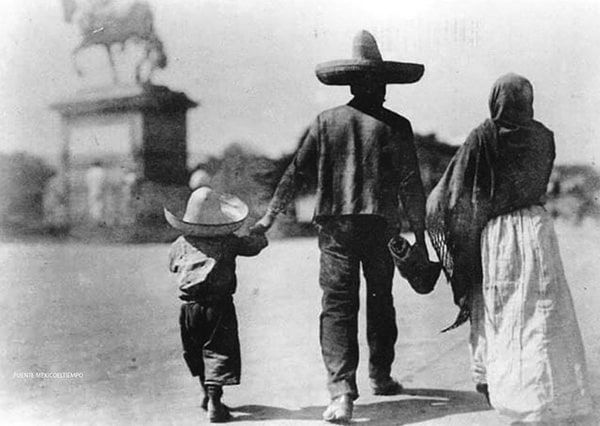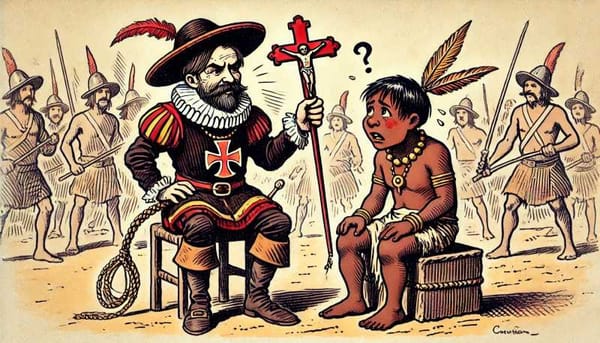Mexicans have a high sense of belonging and national pride
Although there is a hegemonic culture, there are still references to cultural minorities. Education, civic festivities and the Virgin of Guadalupe are key elements in building identity.

The construction of the Mexican nation-state has been a complex process, driven from the centrality and governed by the tension between the various elites that assume power and the different regional and cultural identities present in our territory. Despite this, Mexicans have a greater sense of belonging and national pride than other societies, says Fernando Vizcaíno Guerra, a researcher at UNAM's Institute of Social Research (IIS).
At the beginning of the 19th century, approximately 80 percent of the Mexican population was indigenous and the rest were Creoles or Europeans, and there was a transition towards racial, cultural, linguistic, and legal homogeneity, in which the majority today do not self-identify as indigenous or speak a native language. There is no society in the world in which identity homogeneity reaches the totality. What exists is a predominant national identity: elements common to the majority that give belonging and national pride.
"We have built a mostly mestizo society, which has a way of living Catholicism, although not all of us are Catholics; a specific way of using the Spanish language; with homogeneous legal forms and elements that have constituted an independent State", he adds. However, there are also fundamental references to cultural minorities in the country that have not been recovered by the central government to build that hegemonic identity. The building of that nation, the sense of belonging, the national pride is key and source to legitimize sovereignty and an independent State, its self-determination.
Education, civic festivities, and the Virgin of Guadalupe
Among the key elements in the construction of this identity are education and the control that the educational system has over official history, through textbooks: the way in which the events of the past are taught, those that do not appear in it, and those that are exalted. In the history of Mexico, there are numerous events that have something real, but also epic or even magical. For example the figure of El Pípila, the father Miguel Hidalgo, the Niños Héroes, and the villains.
"Why is Miguel Hidalgo exalted and not Agustín de Iturbide, who was the one who consummated the Independence? The different Mexican elites, the generations of Mexican liberalism, depending on their interests, selected certain symbols of identity, of the people and of the regions", asserts Vizcaino Guerra. Official history means that those of us who are within the jurisdiction of the Mexican State has something in common. That is why it was fundamental for the State to take control of education since the 19th century and take that influence away from the Church and private groups.
Another identity-building element is civic festivities, monuments, and painting, an example of which is the role that Mexican muralism played in this task after the Revolution. Likewise, the image of the Virgin of Guadalupe has helped build a sense of belonging to the nation. "Since the 17th century and up to the government of Vicente Fox -who dared to bring out the Virgin's banner at his inauguration as president- it has had a symbolic capital in dispute between the Mexican government and civil society in general, and with the Catholic Church," he points out.
Although the Virgin remained on the margins of Mexican political discourse after the Revolution, she is part of the national identity. "That is why Mexicans in the United States wear it on their T-shirts, scarves, in paintings and have placed it in Catholic or even non-Catholic Christian churches. It can be said that they are Mexicans not so much because of their relationship with the institutions of the State, but because of their relationship with the image of the Virgin".
Key to the construction of identity are the institutions that promote values in this regard, the sense of threat and the nationalism that exalts its components: history and certain heroes, territory, the idea that there is an unpatriotic person to defeat, and an internal and/or external enemy against whom we must defend ourselves. "The ideas of the defense of sovereignty and of a future that will always be increasingly fair are constant," adds Vizcaino Guerra.
Autonomy and democracy
The specialist in social actors and processes explains that the Creole elites who carried out the independence movement of what is now our country were influenced by the revolutions of the 18th century, the United States and France, but above all by the Spanish revolution of 1808 to 1813, which on the one hand expelled the French from their territory and on the other sought to set limits to the absolutism of the Crown.
When the Cortes de Cadiz -constituent assemblies with representatives from the territories of Spain- were installed and formed into a representative congress in 1811, by popular elections, the first elections were held in what is now Mexico and were also the first practical, democratic experience.
"Associated with this there is a series of ideas that have to do with the transition from vassal to citizen; from the sovereignty of the king to the sovereignty of the people; from the royal treasury to the public treasury; very important freedom, in general of citizenship, and all this is expressed in the Cortes de Cadiz, in the legislative process, particularly in the Constitution of March 1812", refers the expert.
Another second important influence of Spanish liberalism was that of the Cortes de Madrid, 1818-1821, attended by New Spaniards such as Lucas Alamán, who devised how to build the autonomy of the Spanish-American territories. "Those efforts are the most important, the most significant of the first steps of a representative society, which can be the axis of democracy."
After the Restored Republic, adds the university specialist, Mexico followed a long process of revolutions, uprisings, caudillos, in which the country came under the influence of the United States. "Almost all the caudillos who rose up did so in the name of democracy, including Porfirio Díaz, Francisco I. Madero. Democracy is the word used by all the caudillos to legitimize their government".
Finally, he explains that the nation-state is not only a process of the internal life of a country but also in its relationship with international society and the interests of world powers. Thus, it is understood that the first to recognize Mexico's independence and sovereignty were England and the United States; Spain, one of the last.

Source: UNAM





